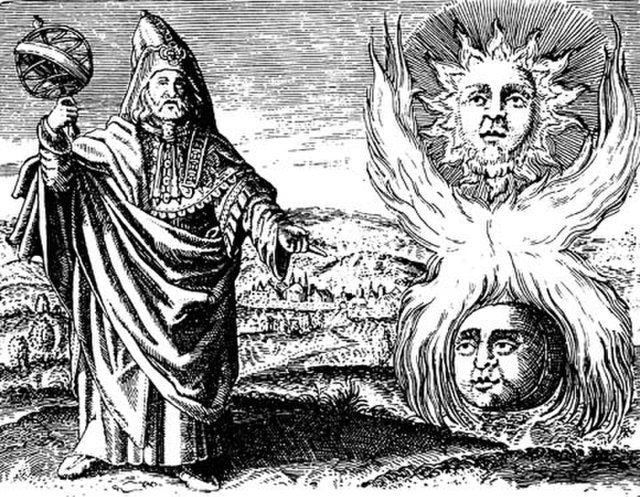In the mystical landscape of ancient wisdom, Hermes Trismegistus stands as a pivotal figure who bridges the spiritual traditions of Greek philosophy and Egyptian mysticism. Known as the Thrice-Great Hermes, this legendary sage embodies the perfect synthesis of the Greek god Hermes and the Egyptian god Thoth, emerging during the dynamic Hellenistic period of cultural exchange.
Quick Answer
Here's what this actually means for you: In the mystical landscape of ancient wisdom, Hermes Trismegistus stands as a pivotal figure who bridges the spiritual traditions of Greek philosophy and Egyptian mysticism. Known as the Thrice-Great...
Beyond the theory, we're focused on what you can actually do with this knowledge.
In This Article
The figure of Hermes Trismegistus arose in Hellenistic Egypt, where Greek rationalism met ancient Egyptian wisdom. This extraordinary fusion gave birth to what scholars now recognize as the hermetic tradition, a profound system of spiritual and philosophical knowledge that would influence both Western esotericism and the development of astrology throughout the centuries. (Learn more about this historical fusion)
The Secret Origins of Hermes the Thrice-Greatest

The Greeks, in their encounter with Egyptian deities, recognized striking parallels between their own Greek god Hermes and the Egyptian god Thoth. This recognition led to a remarkable synthesis that transcended mere cultural appropriation. In the graeco-roman world, this unified figure became known by various names, including Mercurius Trismegistus and Hermes of Egypt.
According to the Hellenistic religion of the time, the Egyptian gods maintained their ancient power while adopting new forms of expression through interpretatio graeca. This syncretism reached its pinnacle in Roman Egypt, where the worship of Hermes-thoth became especially prominent. Historical records from both Paris and Athens document this fascinating merger of divine traditions.
Seven Ancient Secrets of Hermes Trismegistus Revealed
The teachings attributed to Trismegistus encompass a vast range of knowledge, from the movements of the stars to the deepest mysteries of the soul. This wisdom was preserved in the Greek Corpus Hermeticum and the Latin Asclepius, texts that would later profoundly influence the development of gnosticism and prisca theologia in the ancient world.
The Seven Hermetic Principles
The Principle of Mentalism"The ALL is MIND; The Universe is Mental" - The Kybalion |
 |
The Principle of Correspondence"As above, so below; as below so above" - The Kyablion |
 |
The Principle of Vibration"Nothing rests; everything moves; everything vibrates" - The Kyablion |
 |
The Principle of Polarity"Everything is Dual; everything has poles; everything has a pair of opposites; like and unlike are the same; opposites are identical in nature, but different in degree; extremes meets; all truths are but half-truths; all paradoxes may be reconciled" - The Kyablion |
 |
The Principle of Rhythm"Everything flows, out and in; everything has its tides; all things ride and fall; the pendulum-swing manifests in everything; the measure of the swing to the right is the measure of the swing to the left; rhythm compensates" - The Kyablion |
 |
The Principle of Cause and Effect"Every cause has its effect; every effect has its cause; everything happens according to law; chance is but a name for law not recognized; there are many planes of causation, but nothing escapes the law." - The Kyablion |
 |
The Principle of Gender"Gender is in everything; everything has its masculine and feminine principles; gender manifests on all planes." - The Kyablion |
 |
Get Weekly Consciousness Insights
Join thousands receiving sacred wisdom, practical exercises, and exclusive content.
Subscribe FreeNo spam. Unsubscribe anytime.
How Egyptian Gods Changed Western Thought Forever
In the Hellenistic age, figures like Apollonius of Tyana and Athenagoras of Athens drew upon these ancient teachings. The Egyptians, renowned for their wisdom, saw their traditional knowledge transformed through the Greek idiom. This synthesis created a new understanding of the planetary powers and their influence on human destiny.

The hermetic philosophy that emerged combined Egyptian deities with Greek rationalism, creating a monotheistic worldview that would influence generations of scholars, including Albertus Magnus and Henricus Stephanus in Paris. (Explore the philosophical implications)
The Lost Wisdom of Ancient Astrologers
During the Hellenistic periods, astronomy and astrology were inseparable disciplines. Persian astrologer traditions merged with Egyptian words of power, creating a unique synthesis. The stars themselves were seen as divine messengers, with the Greek god Hermes serving as their interpreter.

The Hidden Power of the Emerald Tablet
Perhaps no text better exemplifies the hermetic tradition than the legendary Emerald Tablet, attributed to Hermes-thoth during the hellenistic period. This ancient trismegistus material contains the essence of Western esotericism, expressing profound truths about the nature of reality. (Explore the Emerald Tablet's mysteries)

Written in classical Latin and later translated by scholars in German and Greek idiom, the tablet contains notes on everything from alchemy to the relationship between the world above and below. The text gained prominence in the fifteenth century, influencing both hermetic fragments and the broader corpus hermeticum tradition.
The Eternal Legacy of Thrice Greatest Hermes
The fusion of Egyptian perspective with Greek-arcadian perspective created something entirely new - a spiritual tradition that transcended cultural boundaries. Whether known as Hermès l'egyptien, arabic hermes, or ermete trismegisto, this figure represents the eternal search for divine wisdom.

